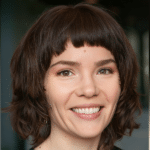What led you to computer vision?
From my background as an astrophysicist, I’ve worked extensively on generating and analyzing images of galaxies near and far. With computer vision, I can delegate image analysis to high-performance computers, allowing for new possibilities that we are still discovering. I get excited about all the useful information that we can extract from images which in turn can have a real impact on the world.
What is your favorite thing about focusing on computer vision?
Computer vision is a fast-evolving branch of data science, that requires us to stay on top of new methods and work effectively as a team. This means that I get to learn new things every day and use my playful and creative side to find solutions.
What is one thing that would surprise people about your field of work?
How much there still is to learn in the field of computer vision in order to come even close to what our own eyes are capable of in a matter of seconds or less.
What kinds of things do you think we should be doing to encourage more people to pursue a career in science?
I think two of the major challenges in getting more people to pursue a career in science, are that young people, in particular, don’t believe themselves to be “smart enough” or can’t imagine what their final job will be like after graduating. I believe that encouraging students early on with positive experiences in their science classes and creating outreach activities as a company to show students what life is like as a full-time scientist, are important ways to change that mindset.
What brought you to CIBO?
I was looking for a job outside of academia that would give me hands-on opportunities to contribute to a more sustainable, healthy planet. In addition, agriculture and food production, in general, have long been high on my list of extra-curricular interests. CIBO presented me with an opportunity to apply my programming skills from astrophysics on satellite images not directed at the sky, but at Earth.
